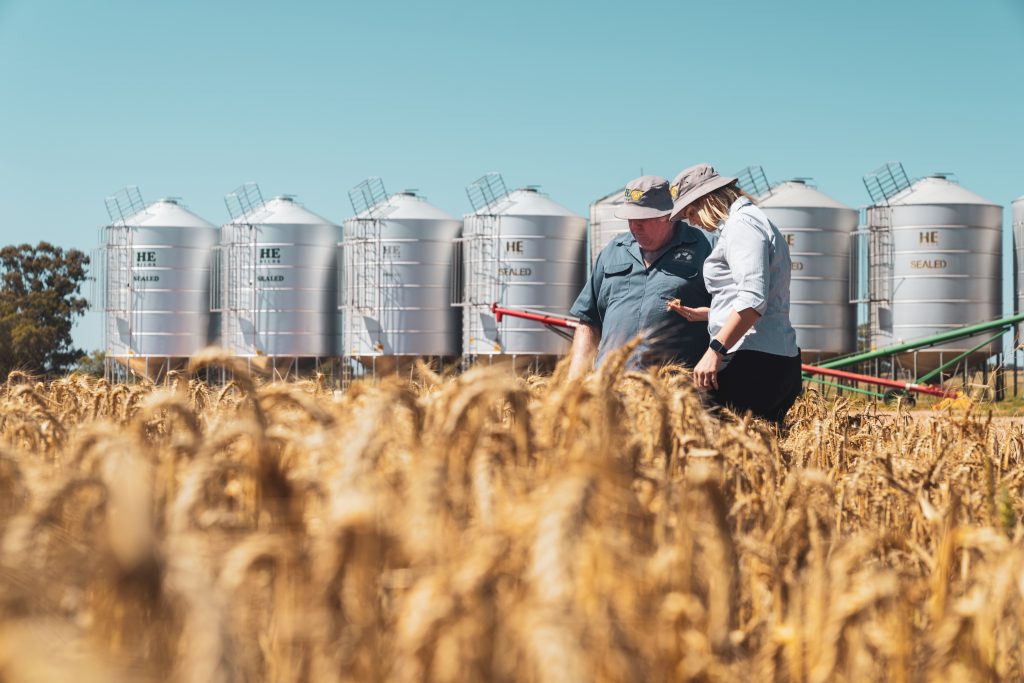2022 Predictions for Agriculture

Welcome back to the blog for 2022! Last year was an absolute rollercoaster for our agricultural community with floods, mice, labour shortages and a health pandemic, just to name a few.
Today I’m having a look into what we can anticipate for 2022.
The La Niῆa weather phenomenon is expected to continue until Autumn, resulting in more mild days but increased humidity. La Niῆa has already given us the highest November rainfall in the 122 years on record, which is set to continue for the next month or two.

The Bureau of Meteorology expect that through February to April, minimum temperatures are likely to be warmer than median across the country (chances are over 60%). BoM also report that many western parts of the country are at an increased chance of unusually high maximum temperatures, which seems very attainable after Onslow, WA matched its record temperature high on January 2nd at a whopping 50.7°C (123.3F).
With that being said, many parts of eastern and northern Australia are still at a high risk of major flooding. Almost all dams across NSW are still full, posing threats to downstream communities.
Experts believe the mouse plague has come to an end. The La Niῆa weather patterns are largely responsible for sparing New South Wales residents from the anticipated resurgence over the summer. Heavy rainfall and prolonged floodwaters have left mice fighting for survival as their thriving breeding environments thin out. Early Spring baiting and clean harvest operations are also to thank, as farmers ensured they had an early jump on numbers post-winter.

There is still a threat, however. Heavy rainfall has led to a lot of crops falling and without being about to pick it up in a header, a lot of grain is left for mice to feed on. Many harvest operations were rushed, to get ahead of rain. A percentage were also so long delayed that the crops remain untouched by a header. While they are isolated, mice do remain and thrive in certain areas.
ABC News have reported from a farm in Walbundrie, southern NSW, where a farmer had to clean out mice from the sieves on his header every few hours while stripping his canola.
Fertiliser prices remain high into 2022, right across the globe. Lack of phosphate being imported from China saw a huge spike in prices in mid 2021, these prices aren’t expected to drop until 2023. Many growers are expected to skip their usual dosage of Urea and/or MAP this year as the prices just can’t be justified. Some have been fortunate enough to fill their fertiliser silos prior to the price increase but regardless, Aussie farmers are bracing for a high input year. Thankfully, soil profile remains promising for the coming year.

To recap:
- The start of 2022 is anticipated to maintain the current high rainfall
- BoM except a higher minimum temperature, as well as unusually high maximum temperatures for many parts of the country
- Flooding remains a very high risk for inland Australia
- Mice numbers have subsided, but remain a problem in some areas
- Fertiliser prices are expected to remain increasingly high over 2022
So, what can you do to minimise your risks? Be PREPARED.
Be on the lookout for any unexplained grain dust, holes in the ground, hay or any grain bags. If you see any signs of mice, bait hard and fast. Maintain cleanliness. Ensure all residual grain is cleared from headers, bins, augers and the surrounds. Have your baits ready.
Weather is out of our hands, but there are things you can do to protect your operations of the potential risks. Clear any debris and remove any branches or trees that may fall. This is particularly important surrounding sheds, machinery, electrical equipment and of course, silos. In case of flood waters, keep your area clean, remove and dispose of any rubbish, especially chemical bins and drums.
In regard to fertiliser, prices will spike again in the future. Plan for next time. Here at HE Silos, the team saw a huge increase in orders for fertiliser silos as the prices started to climb. It’s important to keep in mind that our silos are made to order so that we can accommodate any special design features, so use the current prices as a warning to be prepared in the future. If you are fortunate enough to already have a suitable silo, be sure to follow the guidelines in your user manual to ensure your goods are kept in optimum conditions.
Most of us are hoping 2022 will give us a more ‘normal’ season, but we can’t hold our breath. It’s important to be vigilant, watch the weather forecast and monitor your storage areas.
Steve, the Silologist™

http://www.bom.gov.au/climate/ahead/outlooks/
https://www.abc.net.au/news/2021-12-16/the-nsw-mouse-plague-appears-to-be-over/100690972

